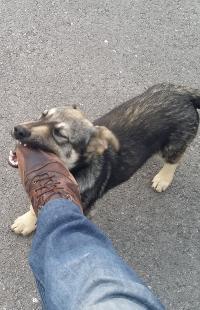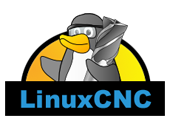Search Results (Searched for: )
- SteveatSteelCut
- SteveatSteelCut
10 Sep 2024 00:17
Replied by SteveatSteelCut on topic Showstopper Plasma Cutter retrofit
Showstopper Plasma Cutter retrofit
Category: Show Your Stuff
- phillc54

09 Sep 2024 23:47
Replied by phillc54 on topic Showstopper Plasma Cutter retrofit
Showstopper Plasma Cutter retrofit
Category: Show Your Stuff
- SteveatSteelCut
- SteveatSteelCut
09 Sep 2024 22:15
Replied by SteveatSteelCut on topic Showstopper Plasma Cutter retrofit
Showstopper Plasma Cutter retrofit
Category: Show Your Stuff
- snowgoer540

09 Sep 2024 22:06 - 09 Sep 2024 22:08
Replied by snowgoer540 on topic Showstopper Plasma Cutter retrofit
Showstopper Plasma Cutter retrofit
Category: Show Your Stuff
- bertoldo
- bertoldo
09 Sep 2024 21:59
Replied by bertoldo on topic Notes from installation of ethercat on Raspberry Pi 4
Notes from installation of ethercat on Raspberry Pi 4
Category: EtherCAT
- rodw

09 Sep 2024 21:49
Replied by rodw on topic Showstopper Plasma Cutter retrofit
Showstopper Plasma Cutter retrofit
Category: Show Your Stuff
- rodw

09 Sep 2024 21:47
Replied by rodw on topic Installing ethercat repositories
Installing ethercat repositories
Category: EtherCAT
- tommylight

09 Sep 2024 21:47
Replied by tommylight on topic Showstopper Plasma Cutter retrofit
Showstopper Plasma Cutter retrofit
Category: Show Your Stuff
- tommylight

09 Sep 2024 21:44
Replied by tommylight on topic Installing ethercat repositories
Installing ethercat repositories
Category: EtherCAT
- bertoldo
- bertoldo
09 Sep 2024 21:40
Replied by bertoldo on topic Notes from installation of ethercat on Raspberry Pi 4
Notes from installation of ethercat on Raspberry Pi 4
Category: EtherCAT
- rodw

09 Sep 2024 21:37
Replied by rodw on topic Showstopper Plasma Cutter retrofit
Showstopper Plasma Cutter retrofit
Category: Show Your Stuff
- rodw

09 Sep 2024 21:35
Replied by rodw on topic Notes from installation of ethercat on Raspberry Pi 4
Notes from installation of ethercat on Raspberry Pi 4
Category: EtherCAT
- bertoldo
- bertoldo
09 Sep 2024 21:21
Replied by bertoldo on topic Notes from installation of ethercat on Raspberry Pi 4
Notes from installation of ethercat on Raspberry Pi 4
Category: EtherCAT
- Masiwood123

09 Sep 2024 21:06
Replied by Masiwood123 on topic 7i96s +7i83 trough 7i44 is it possible?
7i96s +7i83 trough 7i44 is it possible?
Category: Driver Boards
- rodw

09 Sep 2024 20:59
Replied by rodw on topic Notes from installation of ethercat on Raspberry Pi 4
Notes from installation of ethercat on Raspberry Pi 4
Category: EtherCAT
Time to create page: 0.408 seconds
